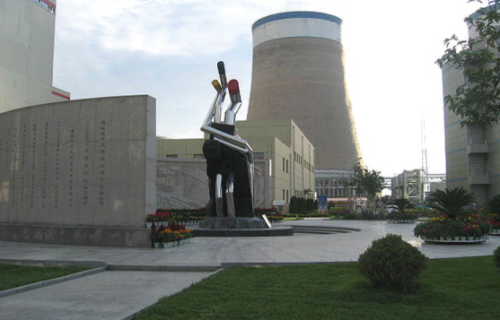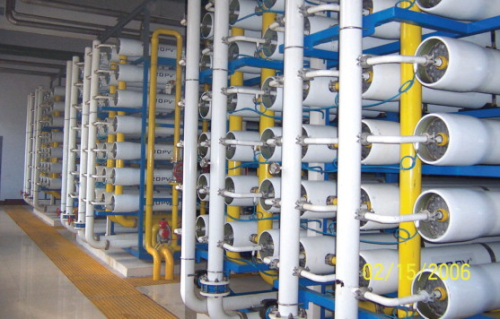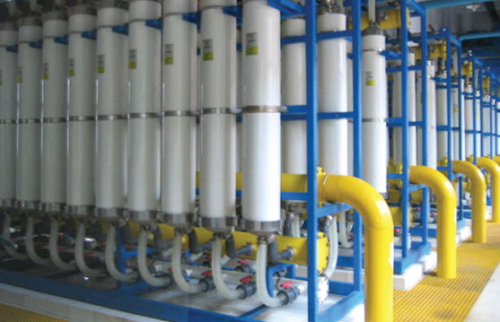


A pdf version of this article is available on the right-hand side under 'Downloads'
The problem
Scarcity of potable water is a critical problem throughout China, and nowhere is the situation more acute than in Shanxi Province. This centrally-located province is fortunate to have about one-third of China's total known coal deposits. However, Shanxi is challenged by an arid climate during most of the year, and a harsh monsoon season that concentrates 60% of annual rainfall between June and August.
Ironically, the Shanxi plateau is often called the ‘sea of coal’. According to People's Daily, the region “has suffered enormously from a lack of water resources. The situation has resulted in limited economic development … and a great number of poor farmers living under absolute poverty.”
To address the crisis, the government and the major industries in Shanxi have implemented large-scale initiatives during the past decade to conserve water and utilise alternative water resources.
One of the most remarkable successes has been the recovery of water from the cooling towers at the Datong Power Plant. Located in the historic city of Datong, this enormous coal-fired plant supplies electricity to the sprawling city of Beijing, 160 miles to the east. The facility's eight cooling towers circulate 6300 m3/hr (39 MGD) of water. One-seventh of the water is continually blown down to prevent build-up of harmful solids, resulting in a continuous outflow of 900 m3/hr (5.6 MGD).
In a different part of the facility, high pressure boilers for the steam turbines in the electrical generation process consume make-up water at a continual rate of 600 m3/hr (3.7 MGD). Since the construction of the plant in 1978, this large volume of boiler make-up water has been purchased from the municipal water utility, straining its ability to satisfy the water needs of its other residential, agricultural and industrial customers.
The solution
Engineers at the Datong Power Plant determined that by purifying the blow-down water with FLUID SYSTEMS® Reverse Osmosis (RO) technology from Koch Membrane Systems, Inc. (KMS) of Wilmington, Mass., USA, the cooling tower blow-down could replace the municipal water as a source for the boiler make-up water.
The Datong plant installed FLUID SYSTEMS spiral-wound RO elements model 8822FR-365 that employs a proprietary TFC® thin-film-composite membrane. The RO system is arranged into four trains, each containing 252 of the eight-inch (20.3 cm) diameter elements.
To optimise the performance of RO systems and protect the membranes from fouling, an effective pre-treatment system is required. Pre-treatment for the RO systems is especially critical at the Datong plant because of unusually high concentrations of silicate in the cooling tower blow-down water.
The Datong plant chose ultrafiltration (UF) as the pre-treatment solution because UF requires a smaller footprint and consumes fewer chemicals than conventional pre-treatment. UF pre-treatment for RO systems is an increasingly common technology used in desalination plants and other large-scale RO systems in China and around the world.
Beijing Lucency, one the largest providers of industrial and municipal water filtration systems in China, was responsible for designing and installing the UF pre-treatment system. In 2004, three major suppliers of UF hollow fibre cartridges participated in a three-month pilot test. All three pilot systems received water that had been processed by the same pre-filtration system, consisting of fibre filters, to remove gross suspended solids.
Only one pilot system was able to meet the rigorous specifications of the project – the system utilising TARGA® UF cartridges from KMS. This pilot system also proved to be the most energy efficient, consuming less energy per cubic metre of permeate. The high reliability and resistance to fouling of the TARGA cartridges were important factors that weighed heavily in the selection process.
The TARGA cartridges use a KMS proprietary polysulphone hollow fibre membrane that has been successfully installed in water treatment plants in China and many other countries for more than a decade. In fact, today in China alone, over 20,000 m3/hour of water is processed through KMS TARGA cartridges.
The hollow fibres are true ultrafiltration membranes, with a nominal molecular weight cut-off of 100,000 daltons, allowing for the removal of particulates, colloids and larger molecular weight components. These KMS fibres have demonstrated the ability to reduce turbidity to less than 0.1 NTU and SDI to between 1.0 and 3.0, making TARGA cartridges an ideal pre-treatment step for spiral RO membranes.
The UF pre-treatment system, with 138 of the TARGA-10 cartridges, was commissioned in July 2005. The TARGA cartridges used are each ten inches (25.4 cm) in diameter and 72 inches (1.83 m) long, for a total of 81 m2 (870 ft2) of membrane area. The cartridges are configured into six separate trains, arranged in parallel, and include an extra train to ensure that five trains will operate continuously, even when a train is taken out of service for cleaning or maintenance.
The results
Although 8-inch diameter TARGA cartridges were piloted, the decision was made to install the newer TARGA-10 cartridges since they deliver 60% more product water than the more conventional 8-inch cartridges. This reduced the number of cartridges needed and resulted in significant savings in equipment cost for the Datong plant. Moreover, the larger diameter cartridges significantly reduced the overall system size enabling a significant saving in building costs.
The UF membranes take the feed of 900 m3/hr from the cooling tower blow-down operation and produce a permeate of 800 m3/hr. The RO system, in turn, recovers 75% of this flow, producing 600 m3/hr of high quality water – completely replacing municipal water as the source for boiler make-up water. No water is wasted, as the concentrate from the UF and the RO processes is used to wash coal.
The UF pre-treatment system with TARGA-10 cartridges reduces the cleaning frequency of the RO system and extends membrane life. The UF system also permits an increase in the recovery rate of the RO system due to the reduced concentration of silica in the feed water. The Datong Power Plant now has the largest UF/RO system used for cooling tower blow-down recovery in China.
“We are very happy with the performance of the UF and RO products from Koch Membrane Systems,” says Mr. Guo Zhiyuan, the plant manager. “The system has performed as expected, allowing us to recover more than five million cubic metres of water per year, which we would otherwise need to purchase from the municipal water utility.”
The intelligent application of membrane technology at this large Chinese power plant has permitted the re-use of cooling tower blow-down and has allowed more potable water from the municipal water utility to reach the needy farmers of the Shanxi Province.




